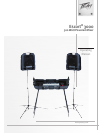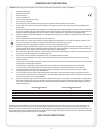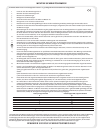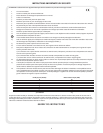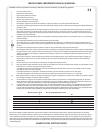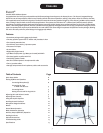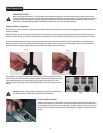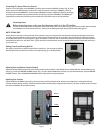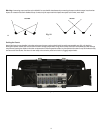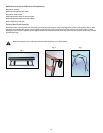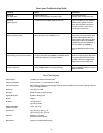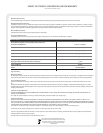
10
Using the Graphic Equalizer
Unlike the BASS and TREBLE controls on each channel that adjust only the tone of their own input
signals, the ve-band graphic equalizer adjusts the tonal balance of all the signals going through the
powered mixer. This gives the user greater exibility in adjusting the sound, but use moderation in
making adjustments.
The FLS
®
(Feedback Locating System) LED indicators are invaluable tools in helping to reduce/
eliminate feedback. To use the FLS feature, start by setting all graphic EQ sliders (Fig. 12) to 0. Then,
before the audience arrives, increase the MASTER VOLUME and/or CHANNEL GAIN until feedback
occurs. Note which LED illuminates and slightly lower the corresponding slider. This reduces the gain
at the feedback frequency and can be repeated if necessary to improve gain before feedback. However,
only lower the sliders in small amounts to avoid adversely affecting sound quality.
Fig. 12
Avoiding Acoustic Feedback
Acoustic feedback is the loud howl or squealing sound heard through sound systems as the result of sound from the speakers re-entering the
microphones. Although it does an excellent job of getting the audience’s attention, feedback should be avoided. When dealing with acoustic
feedback, it is always best to start looking at the placement of the mics and speakers in the system before resorting to equalization (EQ)
adjustments. Make sure that the speakers are positioned to direct the sound toward the audience and away from the microphones. Position
mics as close to the sound source as reasonable. Moving the mic closer increases the volume of the sound through the system without having
to turn up the gain.
Microphone Usage Guidelines
When practical, a single microphone is preferred. Additional microphones pick up more sound from the speakers and each mic must then be
turned down to prevent feedback. However, if you have difculty balancing the level of different individuals with one mic or if you still cannot
get sufcient gain, using more mics can offer an advantage. For example, giving several singers their own microphone allows placement of
the microphones much closer to each singer. This increases the volume of the sound at the mic and far outweighs any detrimental effect from
using multiple mics. It also allows the volume of each mic to be adjusted separately for proper balance.
Reverb
Adding reverberation to music can enhance the sound of that music. To add reverb to a microphone, simply turn up the REVERB control (Fig.
10) on the appropriate input channel. Add reverb in moderation because too much reverb makes vocals hard to understand. In most cases, it
is best not to add reverb to the spoken word.
Stereo/Mono Operation
The Escort
®
powered mixer has two input channels for stereo line sources (4 & 5). If the speakers are situated so that most of the audience
can hear both speakers (Fig. 13 A), it can be advantageous to run the system in stereo. If the audience primarily hears just one speaker (Fig. 13
B), or if you are using one speaker for the audience and the other for the stage performers, then it is best to run the system in mono.
The TRACK SELECT switch on CHANNEL 5 sets the channel for STEREO or MONO operation. On CHANNEL 4, use the LEFT input only for MONO
operation, or both LEFT and RIGHT inputs for STEREO. Inputs on CHANNEL 1-3 are MONO. The TRACK SELECT switch on CHANNEL 5 is also
very useful for playing tapes or CDs with “split tracks.” Setting the switch to L or R allows the signal from a source connected to either the
LEFT or RIGHT input to be directed to both speakers.
Main and Monitor Operation
The Escort can also be used in applications wher stage monitoring is required. By operating the mixer in the mono mode, the right speaker
can be used for providing sound to the audience (MAIN) and the left can be used for the performers (MON). The MASTER VOLUME controls
(Fig. 11) allow the volume of these two speakers to be set independently. If additional sound is required, the auxiliary output (AUX OUT) can
be used to drive an auxiliary monitor amplier or powered monitor speakers.
Auxiliary Output (AUX OUT) Operation
The AUX OUT is a line-level output from the mixer that can be used for recording, or driving an auxiliary amplier.



